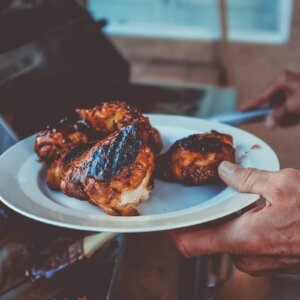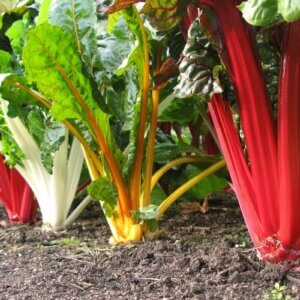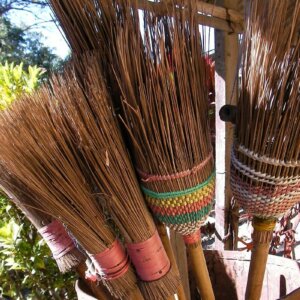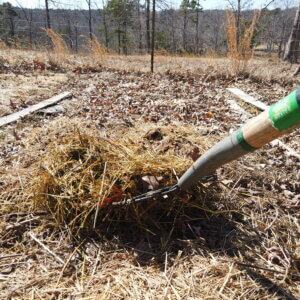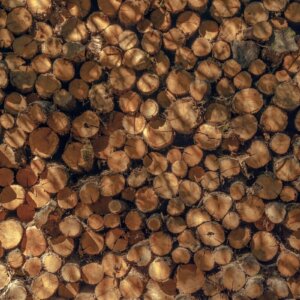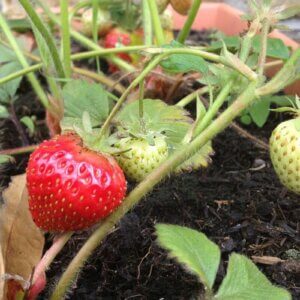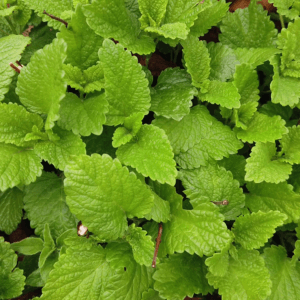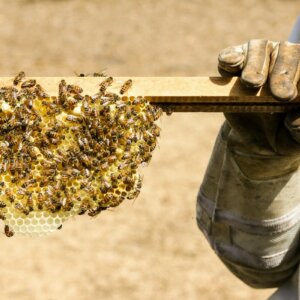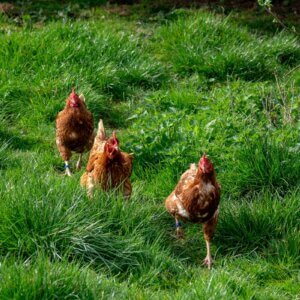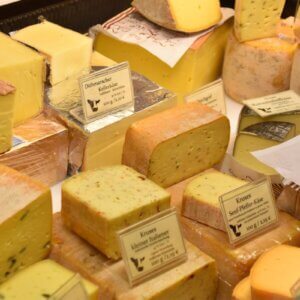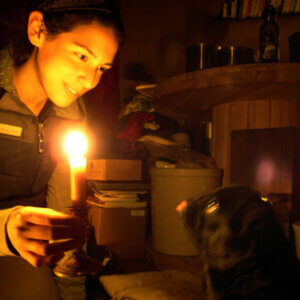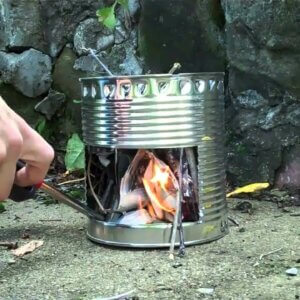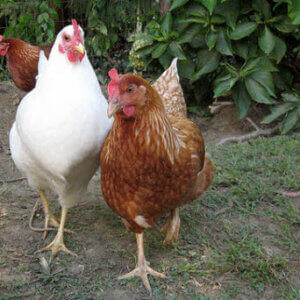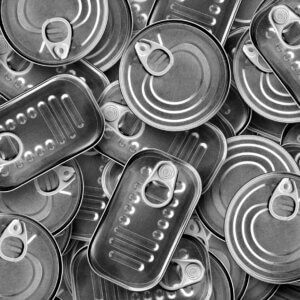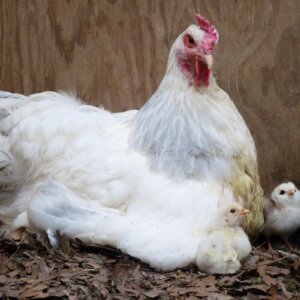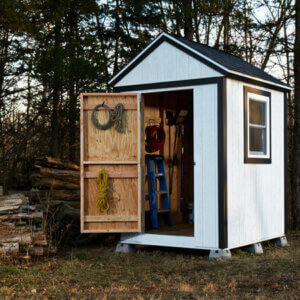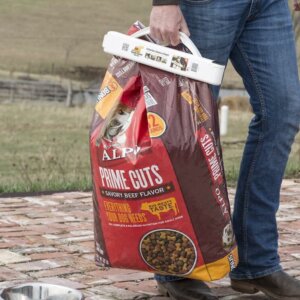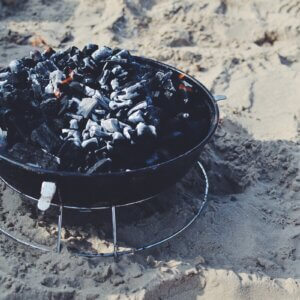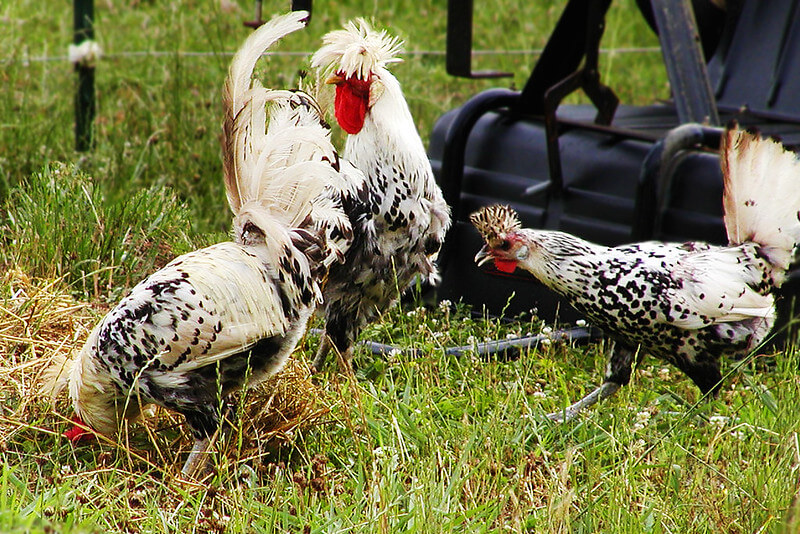
- Purpose: Eggs
- Eggs: White
- Egg Size: Medium
- Color: White and Black
- Comb Type: V-Shaped Comb
Do you like the idea of a fancy-topped Polish chicken but don’t want to deal with the sensitivity to cold and vision issues? Then it sounds like the Appenzeller is the bird for you!
While it still sports a lovely crest of feathers, they tuft up and out of the chicken’s face, showing off its unique v-comb and lively eyes.
Consider this white-and-black spotted chicken a homestead-hardy improvement to the exhibition-hall nature of the Polish chicken.
This national chicken breed of Switzerland comes in two unique varieties: bearded and fabulously tufted.
For the majority of this article, we’ll discuss the more numerous, crest-topped Spitzhauben, but be sure to check out the section on the bearded Barthühner below. They’re far less known, but shouldn’t be forgotten!
A Hardy, Lovely Breed
The Appenzeller Spitzhauben breed was named for the Alpine Appenzell region where it was developed and the crest’s similarity to the ceremonial Spitzhauben hats traditionally worn by women of the region.
These eye-catching birds are most often found with black-tipped, white feathers, making them look somewhat like dalmatian dogs in chicken form! There are many other colorations to be found, however, so enjoy these crested beauties in whatever shade you find them.
These birds are very active and agile — think of them as some sort of wild-eyed mountain adventurer, and you’ll understand their nature a little better. They are superb at foraging, good flyers, avid climbers that roost in trees if given the opportunity, and they resent being confined.
In fact, some sources recommend not keeping this breed unless you can offer them a free-range life. With these birds, if you try to keep them within a fence, they’ll literally fly the coop!
Spitzhauben are cold-tolerant because they were developed in the brisk Alpine air, but they are also able to handle the heat. With their hardy nature and ability to find much of their own food through foraging, these chickens are a superbly economical breed.
All in the Family
Due to their relatively low numbers in the U.S. — even though they’re common in Europe — these rare poultry face quite a few genetic problems due to inbreeding and sloppy breeding.
They may have suppressed immune systems or lymphoid leucosis. Please note, these are not defects inherent to the breed itself, but rather the limited gene pool in the United States. The best defense is to find reputable breeders with diverse breeding stock, and to practice good breeding practices yourself.
What’s the Yield?
These rather fancy birds are egg-layers, producing three medium, white eggs a week. They are a light fowl which is one of the reasons they fly so well. Roosters usually tip the scales at 5 pounds and hens at 4 pounds. Of course, you can eat any chicken you want, but a heavier bird like a Dorking or Wyandotte may be more worth your while!
Spitzhauben are not docile birds, but neither are they flighty and human-shy. They are intelligent and friendly with good keepers. Handle them gently and often, and they’ll be right at home on your pasture. They may not be the cuddliest of chickens as a pet, but with an average lifespan of eight years, they’ll certainly be lovely to watch as they strut through your backyard.
Barthühner, the Lesser-Known Neighbor
The Barthühner literally translates to “bearded hen” and is a far less popular variety than its behatted cohort, but it is still a breed worth considering and preserving. Due to lack of interest in propagating this specific breed, it is quite rare around the world … but not quite extinct yet!
I find it a shame that it has fallen to the wayside because this type was specifically bred to be weather-hardy in the harsh, Alpine winters where it was developed. The rose comb, dense feathering, and sturdy nature are all traits which would benefit cold-climate chicken keepers. In addition, it’s a superb forager and truly needs very little supplemental feed. What’s not to love?
Barthühners usually come in partridge, black, and black-red coloration, giving them good camouflage in the leaf-litter that they love to search. They lay about 3 to 4 eggs a week and are known for being generally docile, though the roosters can get aggressive if housed together.
The hens make good mothers and will often brood their own white eggs. They are larger than Spitzhauben, and though they share a name and association from the region of Switzerland where both breeds were developed, they aren’t closely related.
It’s hard to find lots of information about this rather neglected slice of the Appenzeller family, but if you are able and interested in reviving a worthy breed, I believe they’d be worth your time. You’ll have to do your research to find good genetic stock — especially with so few birds left — so dig in and enjoy the journey.
Photos of Appenzeller Chickens
Resources
- Appenzeller Spitzhauben, My Pet Chicken
- Spitzhauben, Greenfire Farms
- Appenzeller Spitzhauben, Purely Poultry
- Appenzeller Spitzhauben, Feathersite
- Appenzeller Spitzhauben Chickens, Poultry Keeper
- Appenzeller Chicken Breed – Everything You Need to Know, Domestic Animal Breeds
- Appenzeller Spitzhauben Chicken Information, Roy’s Farm
- Appenzeller Spitzhauben, Breed Savers
- Silver Spangled Appenzeller Spitzhauben, The Appenzeller Spitzhauben
- Appenzeller Chickens: The Showy Swiss Breed, Raising Chickens
- Chicken Breed of the Month – Appenzeller Barthuhner, Jim Vyse Arks Chicken Chat
- Appenzeller Barthühner, Omlet
- Appenzeller Barthühner Chickens, Poultry Keeper
- Appenzeller Barthühner Chicken, Domestic Forest

